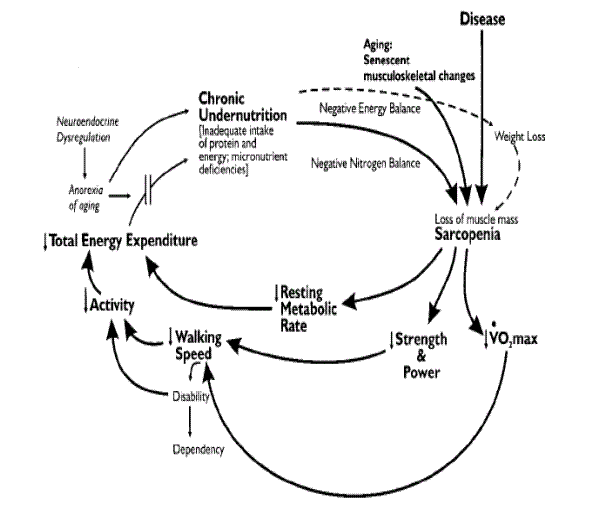Frailty and low muscle mass both associated with low vitamin D
Minerals, trace elements, vit. D and bone health
European Journal of Clinical Nutrition (2013) 67, 1050–1055; doi:10.1038/ejcn.2013.144; published online 14 August 2013
Low vitamin D status is associated with reduced muscle mass and impaired physical performance in frail elderly people
M Tieland1,2, E M Brouwer-Brolsma2, C Nienaber-Rousseau3, L J C van Loon1 and L C P G M De Groot1,2,4
1Top Institute Food and Nutrition, Wageningen, The Netherlands
2Division of Human Nutrition, Wageningen University, Wageningen, The Netherlands
3Centre of Excellence for Nutrition, North-West University, Potchefstroom, South Africa
4Department of Human Movement Sciences, NUTRIM School for Nutrition, Toxicology and Metabolism, Maastricht University Medical Centre+, Maastricht, The Netherlands
Correspondence: Dr M Tieland, Division of Human Nutrition, Wageningen University, PO Box 8129, Wageningen 6700EV, The Netherlands. E-mail: michael.tieland@wur.nl
Background/Objectives: Serum 25-hydroxyvitamin D (25(OH)D) status has been associated with muscle mass, strength and physical performance in healthy elderly people. Yet, in pre-frail and frail elderly people this association has not been studied. The objective of this study was to explore the association between vitamin D intake and serum 25(OH)D status with muscle mass, strength and physical performance in a pre-frail and frail elderly population.
Subjects/Methods: This cross-sectional study included 127 pre-frail and frail elderly people in The Netherlands. Whole body and appendicular lean mass (ALM) (dual energy X-ray absorptiometry), leg strength (one repetition maximum), handgrip strength and physical performance (short physical performance battery) were measured, and blood samples were collected for the assessment of serum 25(OH)D status (liquid chromatography-tandem mass spectrometry). In addition, habitual dietary intake (3-day food records) and physical activity data (accelerometers) were collected.
Results: In total, 53% of the participants had a serum 25(OH)D level below 50 nmol/l. After adjustment for confounding factors, 25(OH)D status was associated with
ALM (β=0.012, P=0.05) and with
physical performance (β=0.020, P<0.05).
Vitamin D intake was associated with physical performance (β=0.18, P<0.05) but not with ALM (P>0.05).
Conclusion: In this frail elderly population, 25(OH)D status is low and suggests a modest association with reduced ALM and impaired physical performance. In addition, vitamin D intake tended to be associated with impaired physical performance. Our findings highlight the need for well-designed intervention trials to assess the impact of vitamin D supplementation on 25(OH)D status, muscle mass and physical performance in pre-frail and frail elderly people.
appendicular lean mass = lean muscle mass in legs and arms.
See also VitaminDWiki
80 percent of the characteristics of frailty associated with low vitamin D – May 2013
Frailty Call to Action: Vitamin D is one of the action items – June 2013
Frailty and Vitamin D – with influence diagram Miller Oct 2010 which has the following chart

Title change made June 2022 caused the visitor count to reset.
There have actually been visitors to this page since it was originally made
